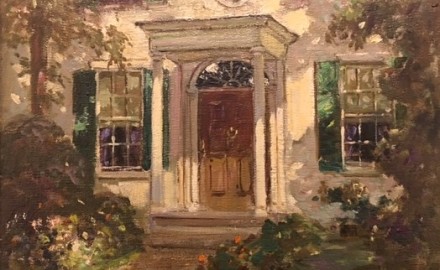Born in Weymouth, Massachusetts, Abbott Fuller Graves was an influential Boston painter known for his floral garden scenes and still lifes. Although much of his work, in keeping with the Boston School style, depicted subject matter in a realistic way, his thick, impasto brush strokes and bright, colorful sun-lit paintings showed his acceptance of Impressionism.
In 1884, he went to Paris and Italy, and concentrated on still life painting, often working with his good friend Edmund Tarbell, also a Boston artist. Graves and Tarbell roomed together in Europe, where they both studied still-life painting.
Returning to Boston in 1885, he became a member of the faculty of the Cowles Art School where fellow-faculty member Childe Hassam, an impressionist, became an influence on his work. In 1887, Graves returned to Paris where he enrolled at the Academie Julian to study figure painting with Jean Paul Laurens.
From 1891, most of his paintings were of floral garden scenes, often with female figures in bright sunlight–showing the influence of European impressionism.
Travels between Paris and New England continued throughout his career, and in 1891, he opened his own art school in Boston which ultimately moved to Kennebunkport, Maine and closed in 1902. He also did illustration work in Paris from 1902 to 1905.
Source:
Michael David Zellman, “300 Years of American Art”










